Mid Feb 2017. We were driving to Chennai. Since 2014 it has only been “driving to”. It’s been unfeasible to take the train since then. Aging parents can no longer cope with coach steps, toilets and train schedules that are all stuck in the 60s. I had vetoed the idea of carrying sweaters as it was already Feb and it shouldn’t be colder than in Bangalore in any case. We reached Shoolagiri, and it was 17°C! Chennai was nice and comfy.
Mid Feb 2019. Driving to Coimbatore. We left Bangalore at 20 °C. Memories of 2017 meant that we carried sweaters, just in case. Coimbatore, however, was burning at 35. Palakkad was showing 37! And summer is not even here yet. Nowhere in the middle did the temperature drop below 20.
On cue, world weather reports show that January 2019 was among the hottest years, ever.
Just in: #January 2019 was the 3rd warmest January on record for the globe, says @NOAANCEIclimate https://t.co/QrjEVJaDIU #StateOfClimate pic.twitter.com/z75wainpH4
— NOAA (@NOAA) February 19, 2019
January was cold. Temperatures went really low in Bangalore, touching even single digits in the surroundings. But this spell lasted barely a week. Beyond that, it kept getting humid as clouds turned up from somewhere each time, and that kept raising the temperatures. Couple this with daytime temperatures almost always hovering around 30°C and we really didn’t enjoy much of the usual winter days.
As per KSNDMC January was unusually colder when it comes to minimum temperatures. The average temperature was closer to 21.5°C and while the average min hovered at 11.28°C, the average max was 31.8°C. It has been a hot and cold winter. Note also that this has generally been the trend this decade.
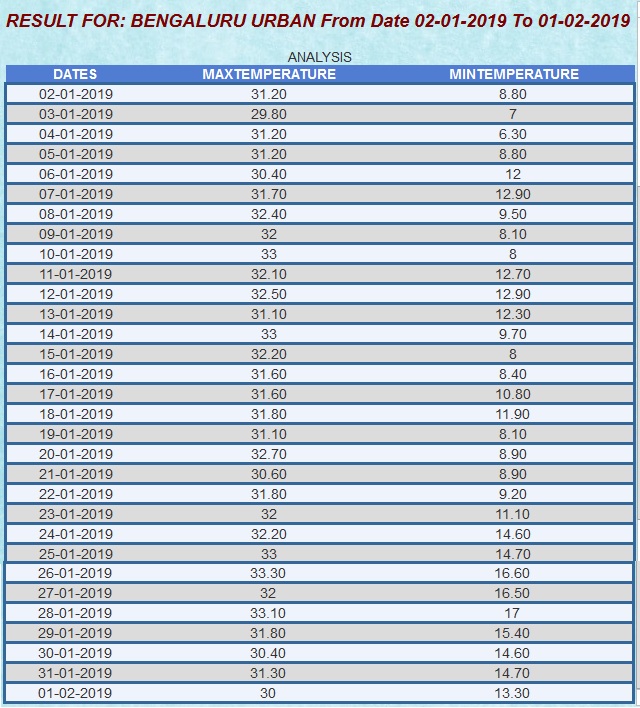
What is interesting is the higher day time temperatures. Purely anecdotally, temperatures used to be lower than 30 usually and you’d be fine with a jacket during day time too. There is just one day, early in the year that docked lower than 30, that too barely. If you look at earlier years, much earlier, 2013 and 2014, a lot of days can be seen in the 29s. Even some 27s and 28s would be visible. (Check http://www.KSNDMC.org query interface).
Now, what does this mean? Does this tie up with general global warming patterns? Yes, and no; more like I’d rather not wager that way. In Bangalore at least rising day temperatures can do a lot more with general urbanisation, loss of green cover, increase in number of vehicles, ppm and all that. How much has it to do with global warming and how much to do with local causes, I don’t know. I’d guess it’s a combination of local and global conditions. There have been reports of how winter is ending sooner and summer starting earlier (leading to longer summers and shorter winters). So that’s there.
What does this mean for the Monsoons. I don’t know. Last year we had a particularly mild summer, with the temperature barely touching 35°C. The Monsoons were excellent along the coast and Kodagu, but a complete letdown in Bangalore and SIK.
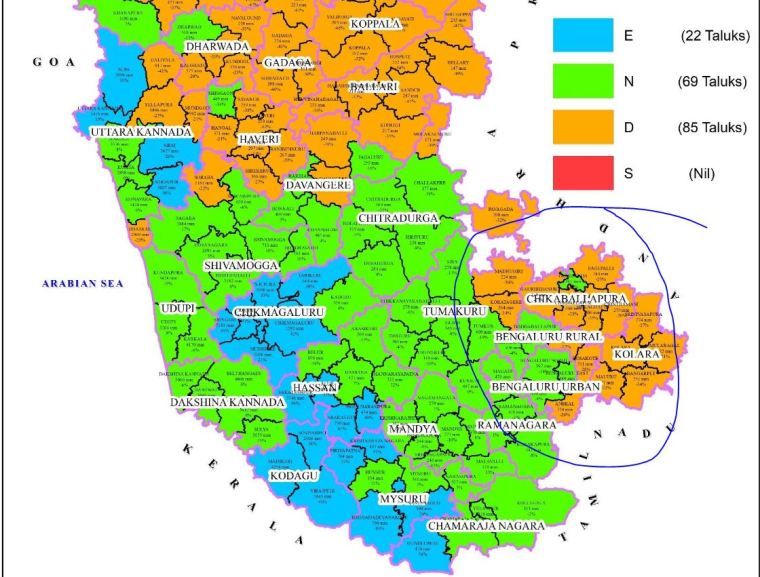
There was already talk of El Nino taking effect in the later stages of the Monsoon and that showed in decreased rainfall activity around September and October which are the wettest months for Bangalore. A few days of heavy rain ensured the months did not face too much deficit, but looks like that’s the way it is going to be in future.
El Nino is already in effect this year, and is expected to end by Feb 2018. The last El Nino ended in 2016, around March-May. So it is possible that the current one which has been short-lived might not affect the Monsoon badly.
But here’s some fun cud to chew on. 2014-15 was a weak El Nino year, 2015-16 was a “Very Strong” El Nino year (source: ggweather). We had droughts, officially from 2014 to 2015. 2016 was a drought-free year. Having said that, coming to South India or Karnataka in particular, 2014 was a good rain year, the reservoirs were full by end of October. 2015 and 2016 were really bad droughts! But Chennai was flooded by end of 2015, and Bangalore also received heavy rains.
2017-18 was (a weak) La Nina. For India, 2017 was a good rains year. But, Karnataka saw the Kaveri rising to only 63% of its capacity and there were widespread rows over sharing the waters with TN. Bangalore, and SIK in general, were flooded with heavy rains all the way till October-November that year!
2018 was an excellent year for rains all over. Except that for Karnataka, it was excess along Kodagu, Hassan and Chikmagaluru, the Kaveri catchment areas, and drought for the regions beyond the Western Ghats. The rivers were full, there were floods, but all the action got over by mid-August with scanty rainfall post that.
In this background, what does a normal monsoon prediction mean? In fact, what does a normal monsoon declaration at the end of the Monsoon even mean? Depending on myriad factors, you could have a great year with lots of rains while the rest of the country is declaring a drought, like Chennai in 2015. You could be reeling under a heavy drought, while other parts of your state are celebrating a heavy monsoon and full rivers, and some even drowning in floods, like NIK and Kodagu during 2018. Forget even that. You could be dealing with floods, and have a shortage at the end of it : Kerala after those 100 year floods in Aug 2018.
When just one month of conventional monsoon season is left, India faces a deficit of six per cent rainfall. The normalcy implied by this figure hinges on the enormous excess seen in the southwestern parts of the peninsula this month when around 40 per cent of the country faces drought. Distribution of monsoon rains has seen a deviation from the normal owing to several regional and global climatological factors.
What we are seeing is a new normal, and country-wide predictions of Monsoons don’t make sense anymore. We need more granular predictions, at least at region levels (NIK, SIK), and try to get them right over the years. Otherwise we’ll continue to be celebrating normal monsoons, while a third of the country will be under floods, a third in drought, and some parts reeling from both.
So what does all of this mean?
Well, welcome to the anthropocene, all bets are off!

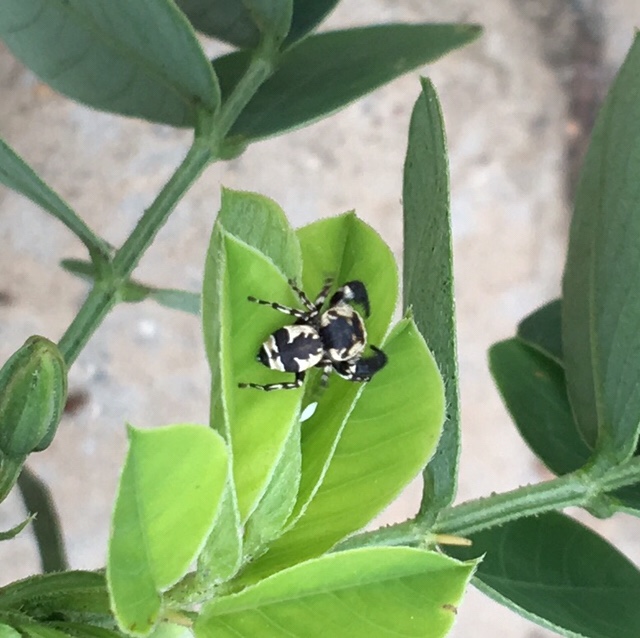
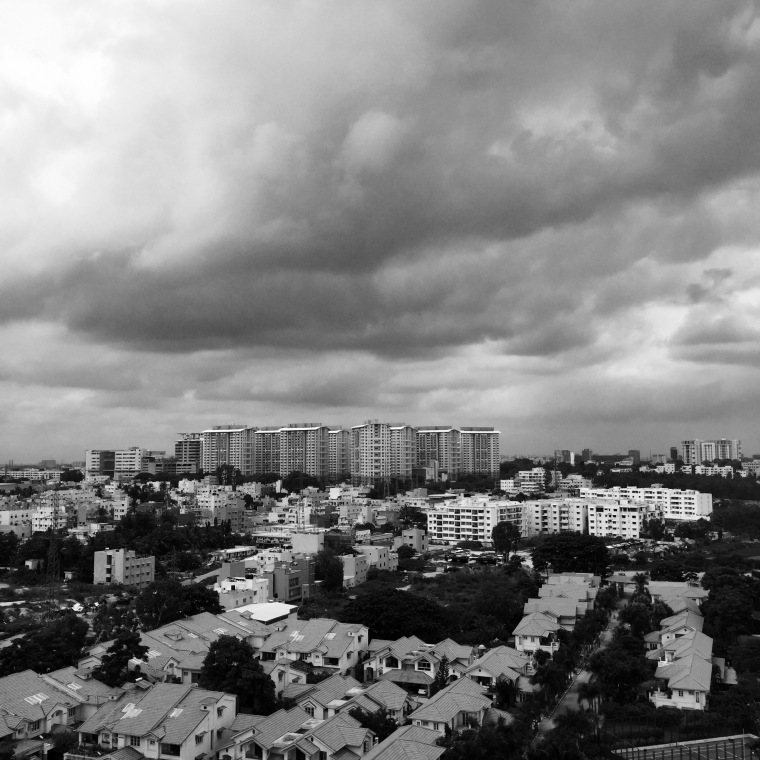
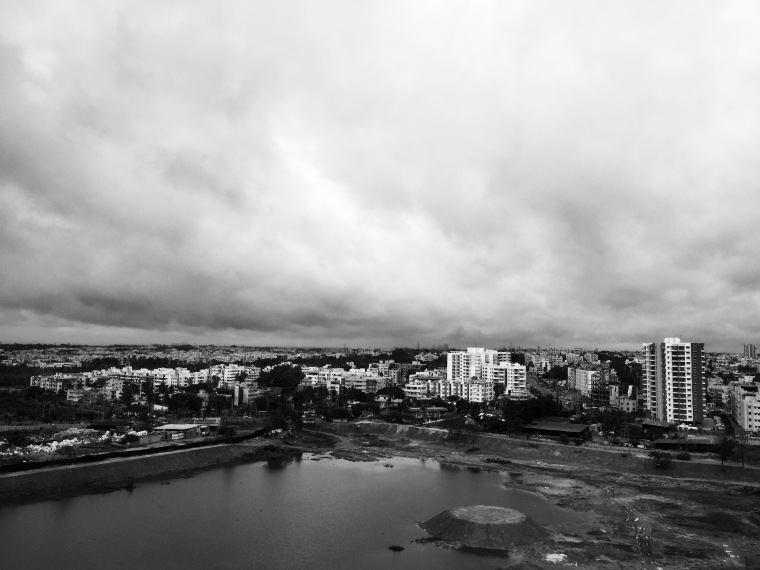 Oh well, sometimes I wonder if this is just a phase for me, and the weather is something I am railing against for not helping. A bit of sunny love would be nice though, but what does one do?
Oh well, sometimes I wonder if this is just a phase for me, and the weather is something I am railing against for not helping. A bit of sunny love would be nice though, but what does one do?